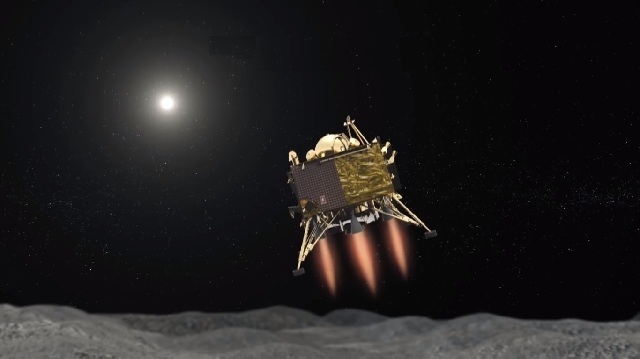NB Explains| ISRO's failure-based design : Let's understand what it learnt from Chandrayaan-2's failure
While Chandrayaan 2 was developed at a cost of Rs 978 crore, including the cost of the spacecraft and the rocket launcher, Chandrayaan 3 will be developed at an estimated Rs 250 crore.
Total Views |
The Indian Space Research Organisation (ISRO) is gearing up to make another attempt to land on the moon with the launch of Chandrayaan-3 on Friday (July 14) years after the failure of Chandrayaan 2.
As per the agency, ISRO has opted for a "failure-based design" for the second attempt to ensure that the rover successfully lands on the moon even if some things go wrong. So lets, understand how ISRO has learnt from its previous mistakes.

What happened to Chandrayaan-2 lander Vikram?
It should be noted that on September 7, 2019, 1.3 billion hearts broke as Chandrayaan-2's lander, called Vikram, failed to make the desired smooth landing on the moon.
The ISRO lost contact with Vikram on the day of landing when it was barely 335 metres (0.335 km) from the surface of the Moon.
The lander’s velocity was supposed to be reduced from 6,000 km/hr to 0 km/hr in four phases to be carried out within 15 minutes. However, during the second phase, the velocity was not reduced as desired, which the third phase could not handle.
Something seems to have gone wrong. #Chandrayaan2 #ISRO pic.twitter.com/EtuCYGosp5
— Michael Baylor (@MichaelBaylor_) September 6, 2019
“The primary issues were, one, we had five engines which were used to give the reduction of the velocity, which is called the retardation. These engines developed higher thrust than what was expected,” Current ISRO Chief Somanath said. He said extra thrust led to the accumulation of errors, which, in turn, compromised the stability of the lander during the “camera coasting phase’’ for the soft landing.
Talking about the second issue, he said all the errors got accumulated, which was on the higher side than what we had expected. The craft had to make very fast turns. When it started to turn very fast, its ability to turn was limited by the software because we never expected such high rates to come.
He said the third reason for failure was the small 500m x 500m site identified for landing the spacecraft."The craft was trying to reach there by increasing the velocity. It was almost close to the ground and kept on increasing the velocity," Somanath said.
What ISRO has learnt from Privious Mistakes
- According to ISRO, the latest spacecraft will also have more fuel to enhance its capability to travel or handle dispersion or move to an alternate landing site.
- Instead of five motors, the new lander will now have four motors and certain software adjustments have also been made.
- The Vikram lander in Chandrayaan- now has additional solar panels on other surfaces to ensure that it generates power no matter how it lands.
VIDEO | "The ability to handle parameter variation or dispersion was very limited in Chandrayaan-2. So, instead of success-based design, we are doing a failure-based design in Chandrayaan-3. What all can fail, and how to protect it — this is the approach that we have taken," says… pic.twitter.com/GnpHAUbyt2
— Press Trust of India (@PTI_News) July 10, 2023
“We looked at very many failures – sensor failure, engine failure, algorithm failure, calculation failure. So, whatever the failure we want it to land at the required speed and rate. So, there are different failure scenarios calculated and programmed inside,” ISRO chief S Somanath said. The ISRO chief said that the Vikram lander has been modified to ensure that it generates power no matter how it lands.
How Chandrayaan 3 is different from Chandrayaan 2
While Chandrayaan 2 was developed at a cost of Rs 978 crore, including the cost of the spacecraft and the rocket launcher, Chandrayaan 3 will be developed at an estimated Rs 250 crore.
The rover will conduct experiments on the Moon for a period of 14 Earth days. Notably, one day on the Moon is equal to 14 days on Earth.
Unlike Chandrayaan 2, the new moon mission spacecraft will not be carrying a rover aboard. Further, the Chandrayaan 3 spacecraft will carry a payload called Spectro-polarimetry of HAbitable Planet Earth (SHAPE), which the previous mission did not have.
The Chandrayaan-3 mission is slated to be launched on July 14 at 2:35 pm onboard a Launch Vehicle Mark 3 (LVM3) from Satish Dhawan Space Centre, Sriharikota.

